In 2016 Eton College Library held an exhibition, Shakespeare on Page and Stage, to celebrate the 400th anniversary of William Shakespeare’s death. This online version, launched in 2023, focuses on the printing of the plays as part of the library’s contribution to national celebrations marking another 400th anniversary — that of the publication of the First Folio. Here we feature some starring items from the 2016 exhibition, which drew from the library’s rich holdings of materials relating to Shakespeare and his plays.
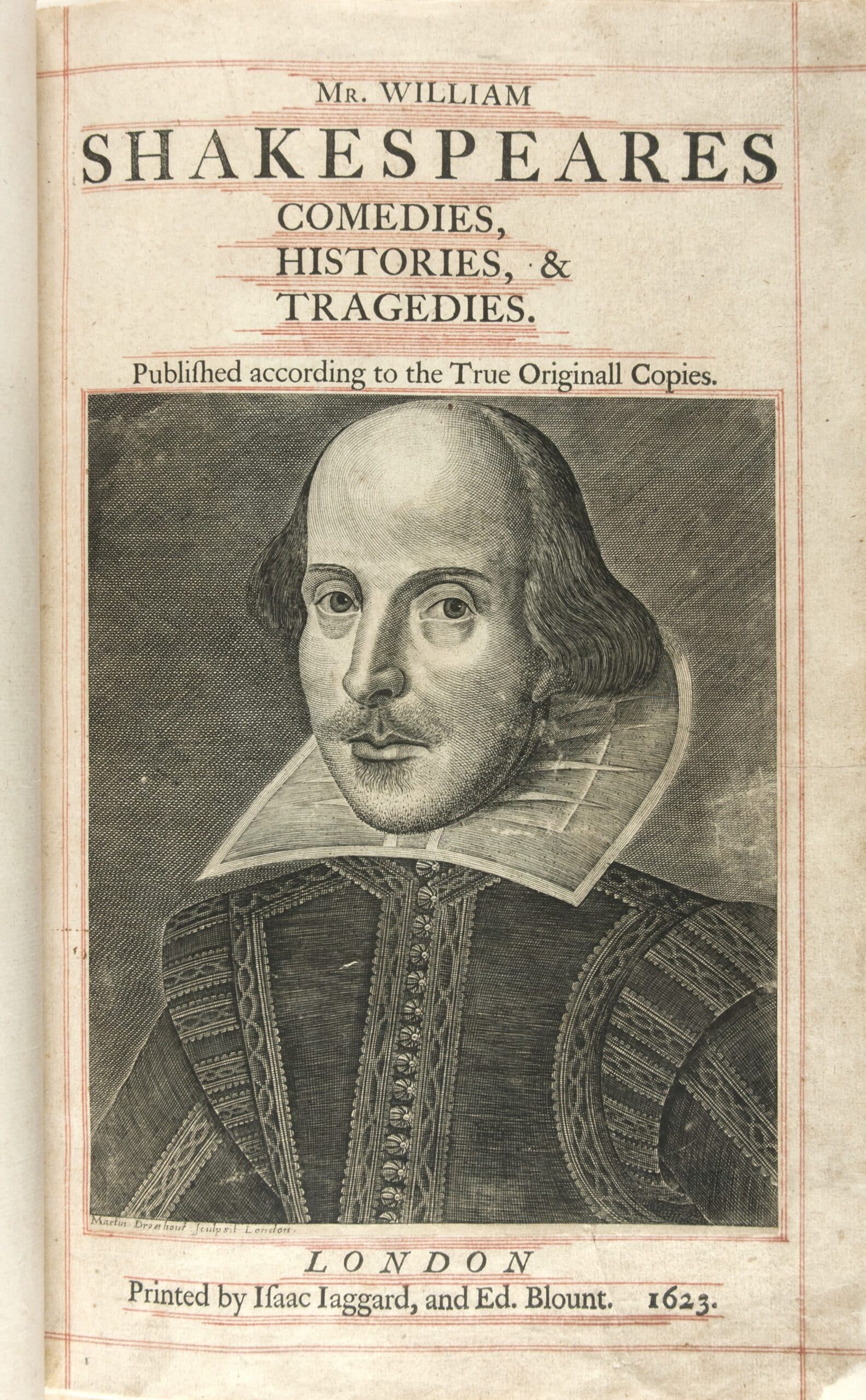
Mr. VVilliam Shakespeares comedies, histories & tragedies. Published from the true originall copies, London, 1623 (The First Folio)
The First Folio is the first collected edition of the plays of William Shakespeare. It was published in 1623, only seven years after his death. Two of his fellow actors and friends, John Heminge and Henry Condell, undertook the work of editing the text and supervising the printing by Isaac Jaggard and Edward Blount. They assembled 36 of his plays for publication in a large volume (folio) as a worthy memorial.
Eighteen of these plays — including Macbeth and Twelfth Night — had never before appeared in print and are known in no other authoritative text. The remaining plays had been published previously, but all in smaller format and some poorly edited. The engraved portrait by Martin Droeshout on the title page is the only known authentic picture of Shakespeare.
It is estimated that between 750 and 1,200 copies of the First Folio were printed and probably sold unbound for 15 shillings. About 235 survive today. Eton’s copy was bequeathed to College Library in 1799.
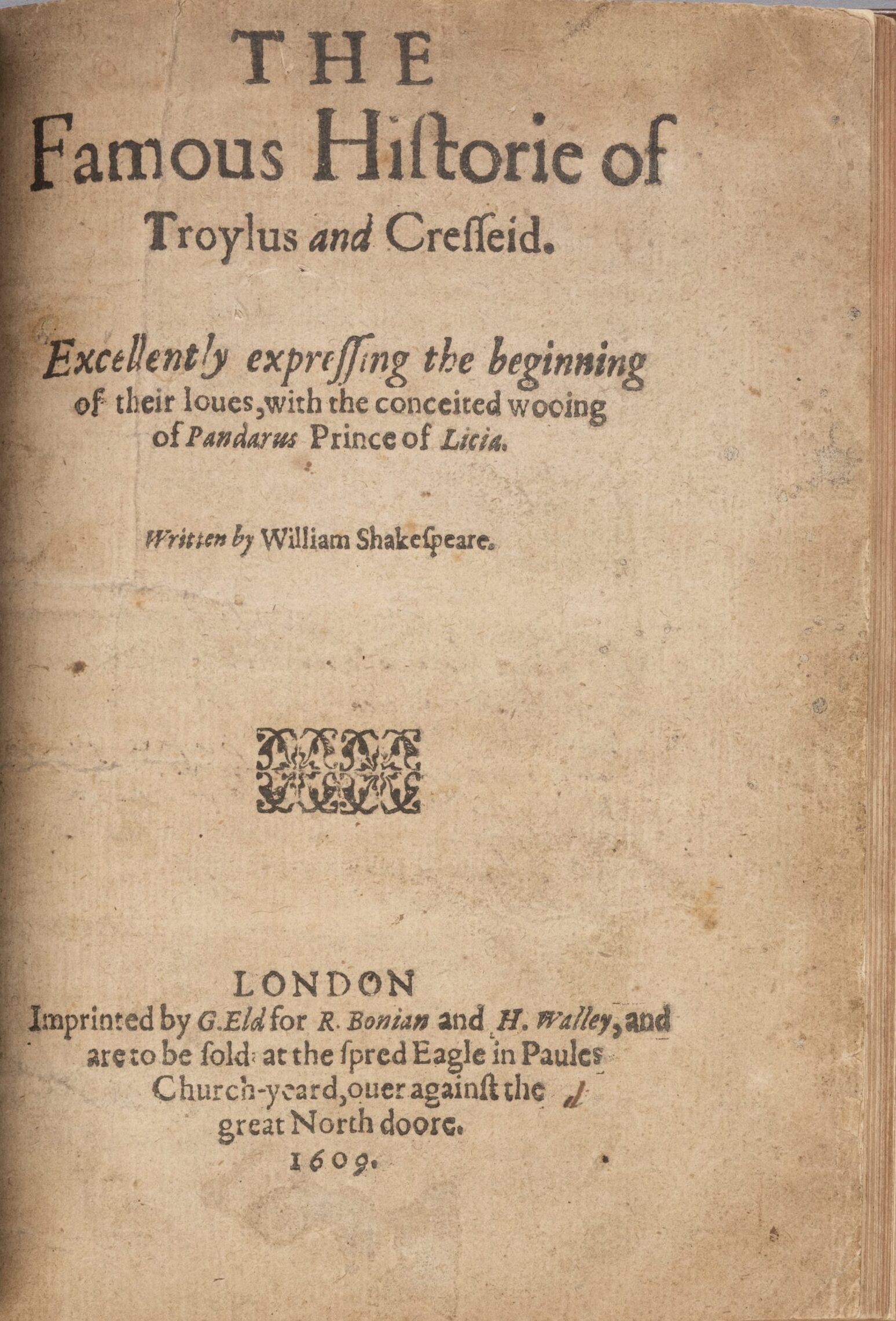
William Shakespeare, The famous historie of Troylus and Cresseid…, London, 1609
The first editions of Shakespeare’s plays were quartos. They were small, relatively cheap books formed by folding printed sheets in half twice to make sections of eight pages. Twenty of Shakespeare’s plays were published in this format before his death in 1616.
This is the only example in College Library of a quarto printed during Shakespeare’s lifetime. The version of Troilus in the First Folio may have been set from a copy of this quarto, with reference to a manuscript prompt-book.
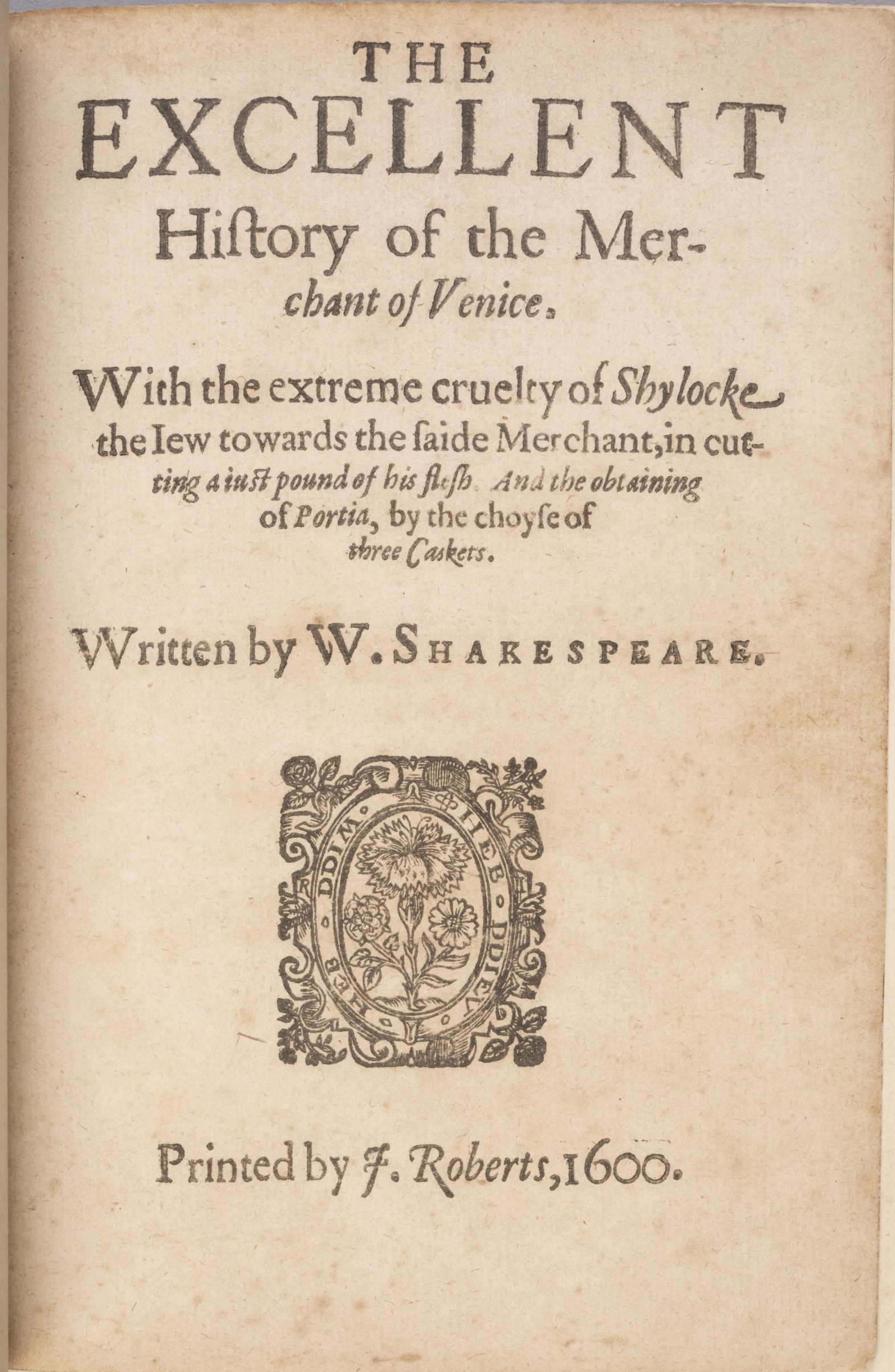
William Shakespeare, The excellent history of the merchant of Venice, [London]: J. Roberts [i.e. W. Jaggard for T. Pavier], 1600 [i.e. 1619]
The first attempt to bring out a collected edition of Shakespeare’s plays appears to be a collection of ten unauthorised quarto reprints by William Jaggard for Thomas Pavier. Although falsely dated 1600 on the title-page, this collection was printed in 1619. It includes the second quarto edition of The Merchant of Venice.
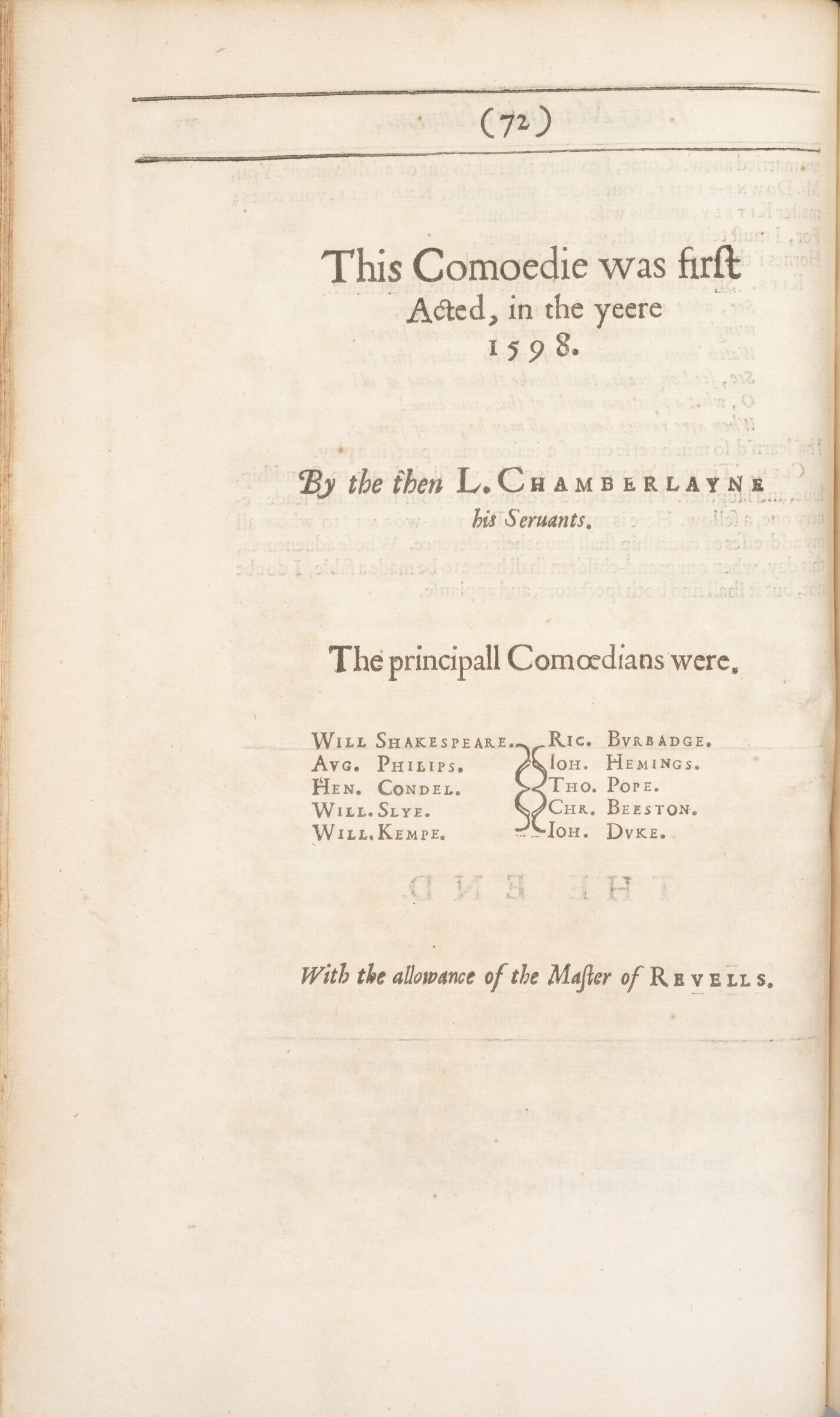
Ben Jonson, The works of Beniamin Jonson, London, W. Stansby, 1616
The first English author to publish plays in folio format was Shakespeare’s friend and rival Ben Jonson in 1616. Shakespeare’s name appears in the list of performers appended to two of the plays, Every Man In his Humor and Sejanus acted respectively in 1598 and 1603.
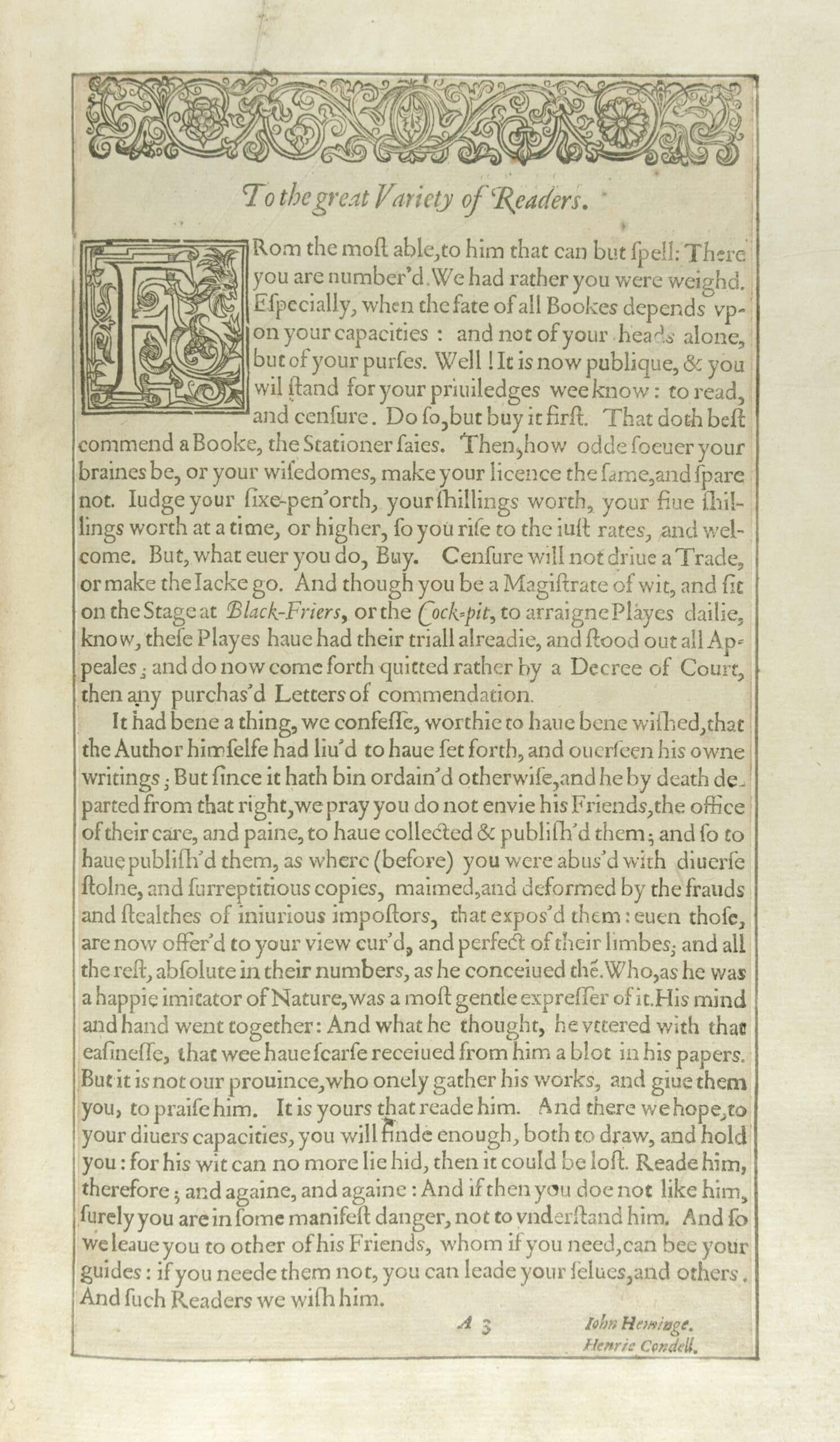
Note to the reader from Mr. VVilliam Shakespeares comedies, histories & tragedies. Published from the true originall copies, London, 1623
The term ‘folio’ refers to large books formed by folding printed sheets in half, creating four pages. These were expensive to produce, and usually reserved for prestigious or serious works, not for ephemeral plays. The First Folio was edited by Shakespeare’s fellow actors and friends John Heminges and Henry Condell. It is not known whether the idea was first conceived by the King’s Men or by the publishers, but their work was to have far-reaching impacts.
See the catalogue record for the Eton College Library copy of the First Folio
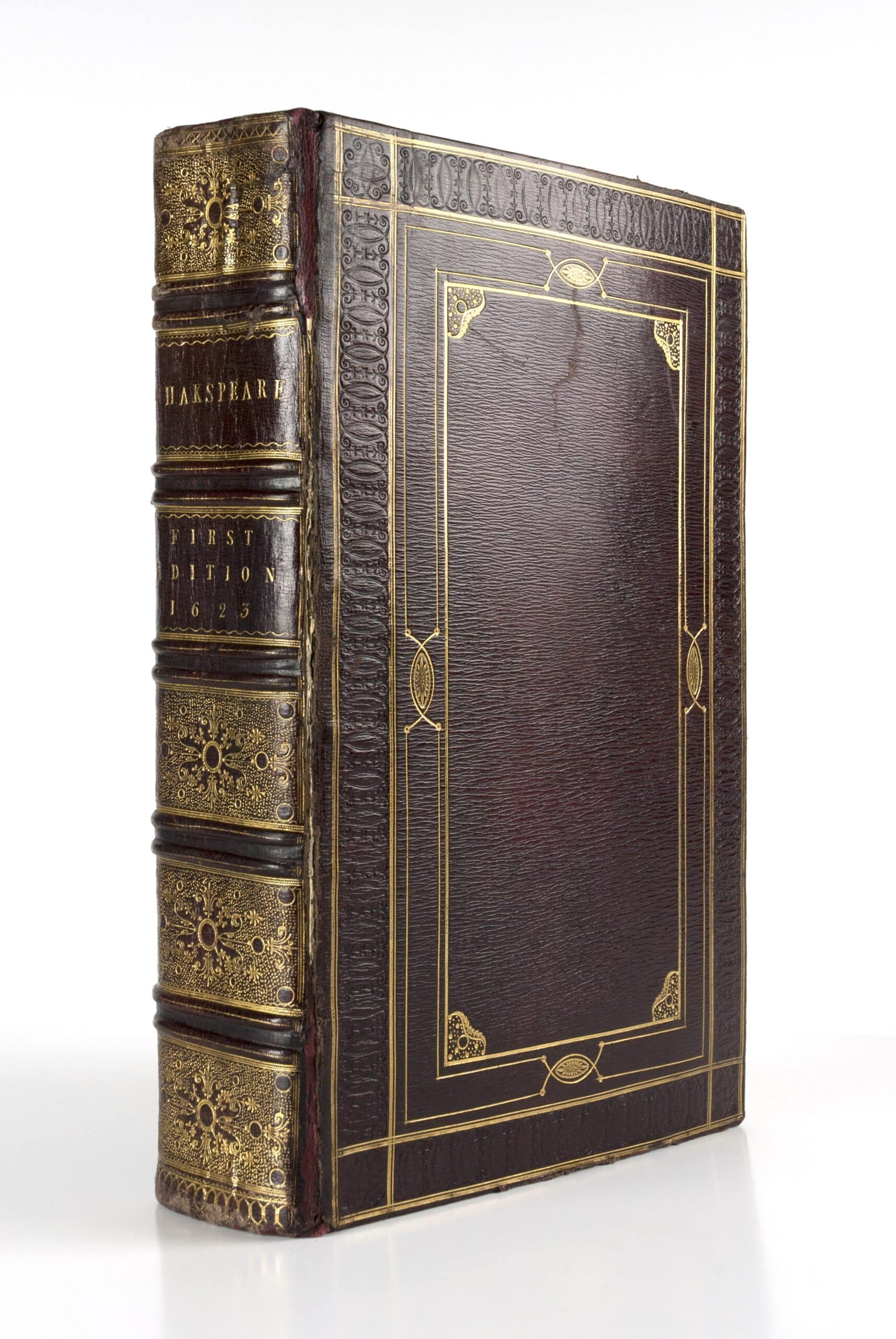
Mr. VVilliam Shakespeares comedies, histories & tragedies. Published from the true originall copies, London, 1623, binding.
The copy of the First Folio in Eton College Library has been red-ruled and rebound in the late 18th century by a former owner. The binding is a beautifully decorated burgundy morocco with concentric frames of gold fillets enriched with a blind geometric pattern roll and fine gold tools. Along the spine, the author’s name and the words ‘First Edition 1623’ are accompanied by elegant gold decorations and fillets. Eton’s copy, which arrived in College Library in 1799, is the thickest of all of the 235 surviving copies of the First Folio, thanks to the inclusion by a former owner of dozens of engravings of individuals and places associated with the plays bound in at the end.
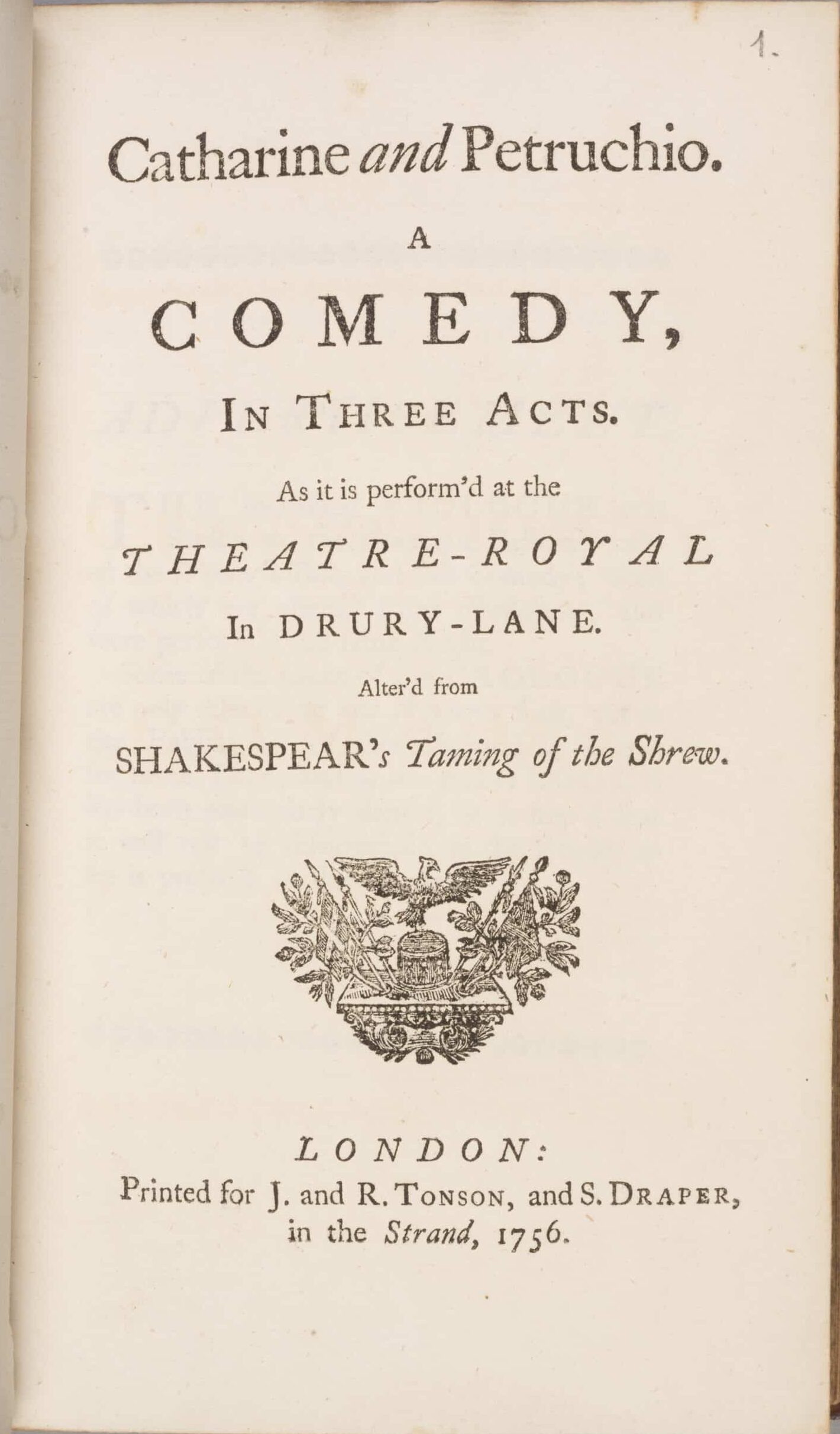
David Garrick, Catharine and Petruchio, London: J. and R. Tonson, and S. Draper, 1756
The key figure in Shakespeare’s cultural apotheosis was the actor David Garrick, who burst upon the London stage with his sensational debut as Richard III in 1741. In his production, Garrick restored passages of original dialogue as well as adding passages of his own composition, resulting in wholly new versions of Shakespeare’s plays. This adaptation of The Taming of the Shrew supplanted Shakespeare’s original until 1886.
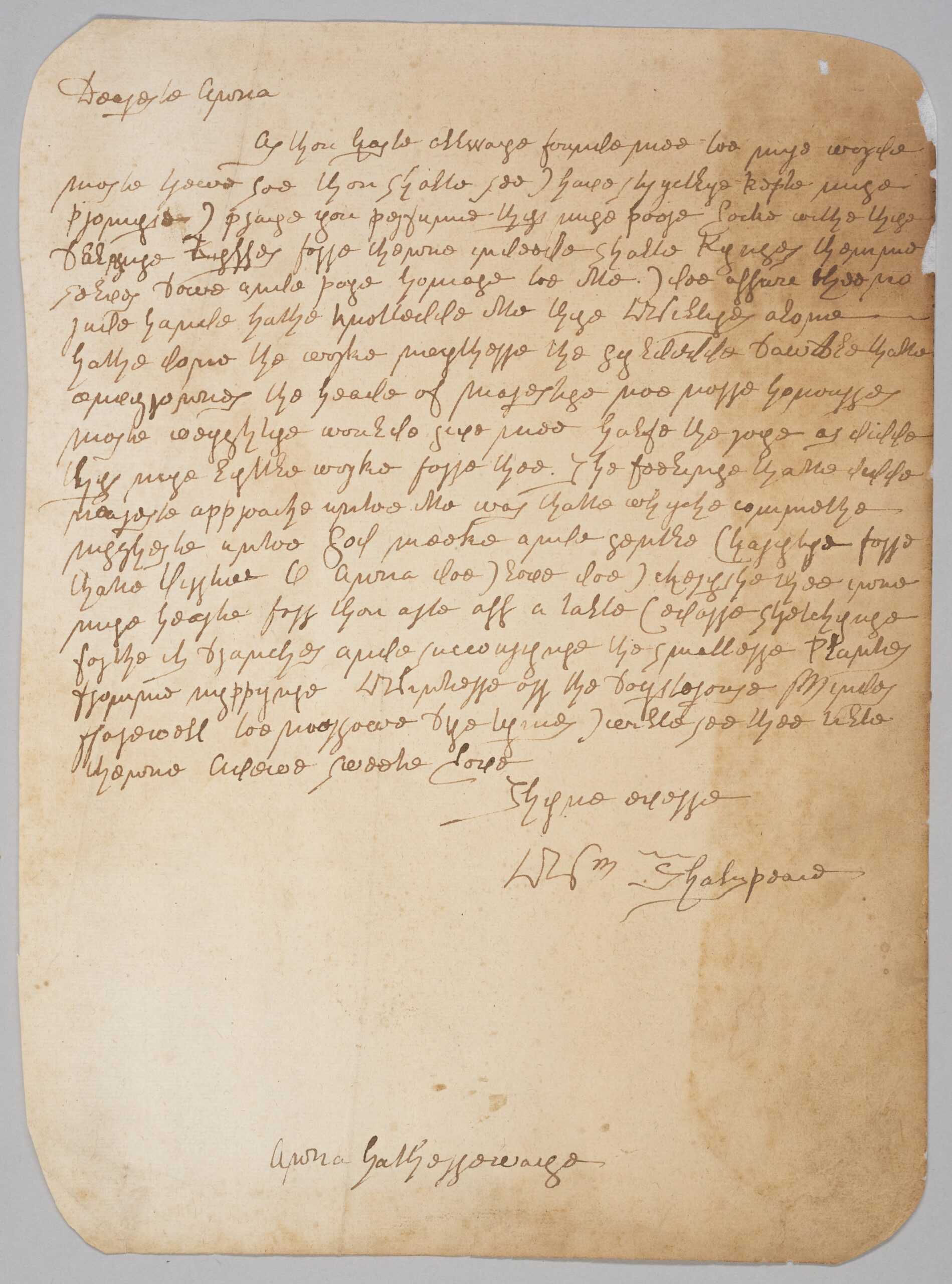
W. H. Ireland, Autograph copy of a letter purporting to be from Shakespeare to Anne Hathaway, 1790s
With one possible exception, all of Shakespeare’s manuscripts are lost. In 1794, at the height of ‘bardolatry’, this lack of tangible relics prompted a young legal clerk, William Henry Ireland, to fill the gap by forging a series of legal and personal documents purportedly in Shakespeare’s hand. This is one of several contemporary autograph copies of Ireland’s forged love letter from Shakespeare to Anne Hathaway, all of which have a number of textual variants.
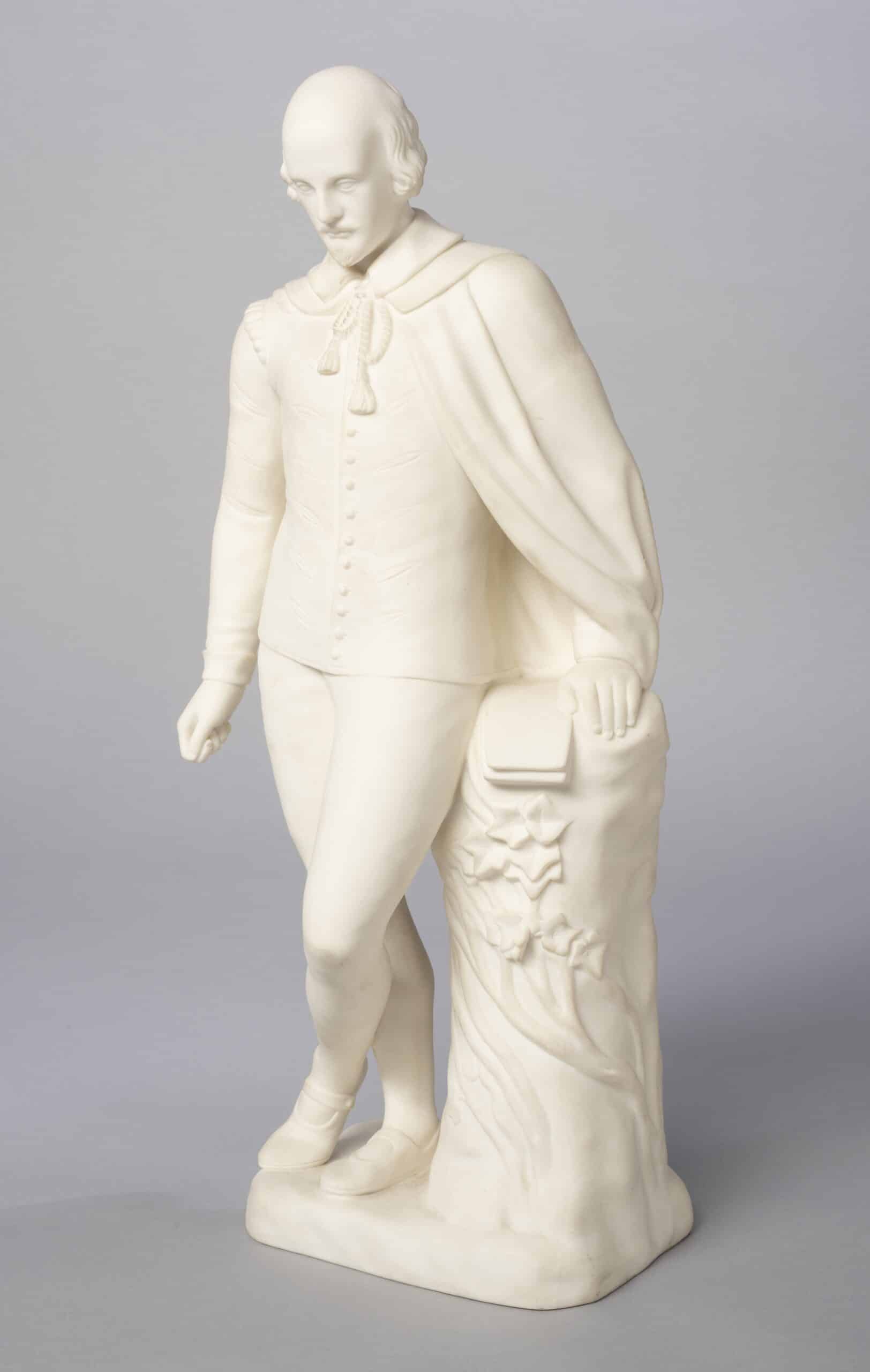
John Bell, Minton porcelain figure of Shakespeare, Stoke-on-Trent, Staffordshire, c.1866
Very few concrete facts are known about the man behind the plays. This idealised figure is a copy of the life-sized statue that was displayed in the Great Exhibition of 1851, along with a number of other representations of the national poet. Bell’s statue drew on both the 17th-century bust on the author’s tomb at Stratford and the 18th-century monument in Westminster Abbey.
♦♦♦
The catalogue for the Shakespeare on Page and Stage exhibition held at Eton in 2016 may be viewed or downloaded here.
♦♦♦

